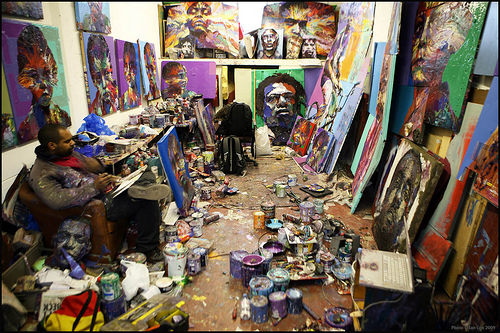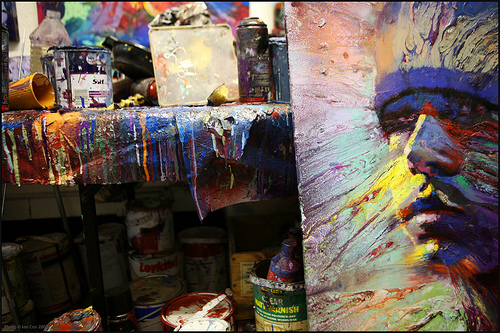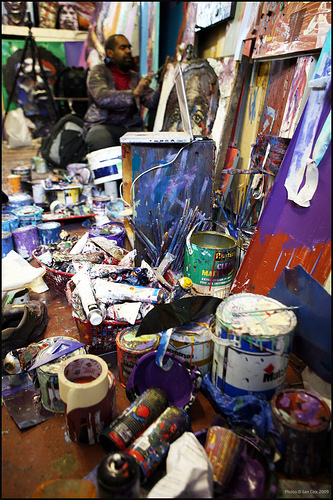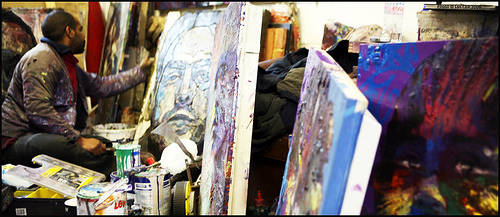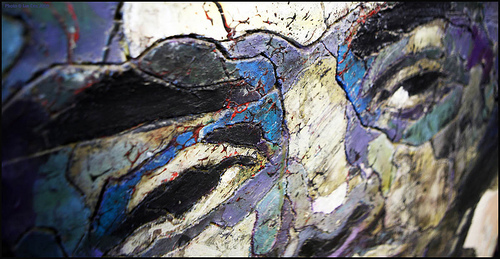Here’s part two of my video interview with Matt Small. It’s from his recent show, “Youngstarrs” at Black Rat Press in London. The show is up for another week, so you can still catch it if you haven’t seen it in person yet. There’s some really beautiful work which Viddler’s image quality does not show off properly at all. If you haven’t seen it yet, you can check out Part One of this interview as well.
The audio is poor, so there is a transcript below the video.
RJ: So how do you choose who to paint?
Matt: Well I got my film camera…
We talk about how I only brought a cheap video camera.
Matt: Yeah so I film people with a video camera and I do it at a nice discreet distance. So in a way it’s a bit naughty, but what you’re doing is you’re getting them unaware and you’re capturing them in their own natural way of being. You know what I mean? [inaudible] Because I film them and people assume an identity. We all do that. We all… I’m doing it now. So we all assume an identity, and we stop being ourselves as such. We put out what we believe we want people to see. I bypass that by filming you, without you knowing. And then I can just go through that and find ones that I believe in [inaudible] and I’ll get that person. So there are all just like kids on the street. And, as sinister as that might sound, that how I’ve got them. One of the kids here, he was from a place called [inaudible] estate in North London. He’s sitting there, and I just filmed him. He had that beautiful look about him. [Inaudible]. I just that was very telling of the kids that are growing up in that particular area. They’re growing up in a tough estate and [inaudible] and who knows what lies ahead.
RJ: What’s the process to paint one of these, the actual painting though, once you have the image?
Matt: Once I have it? Well I’ll film, sketch, and then I’ll build up the sketch on metal and I’ll use oils and use that to build up tones and then I use [inaudible] I’ll get loads of emulsions paints which you see [inaudible] different tones of paint that I use and then I scratch it on. And I’ve got a little tool that I use to smear the paint around and it creates a sort of collidial process where all the paints mix and it’s like being in a realm of chaos because what I’ve just done is before I painted a very conventional painting: a very nicely done picture. Every time I do that it’s me protesting against traditional portraiture. It’s me saying “damn the way that [inaudible].” And it’s quite liberating. I’ve just destroyed this picture that [inaudible], and then I’ve got to try to get it back. The way I [inaudible] to bring it back as a different picture. Almost like it’s been reborn into something that I would like to think is progressive and it’s saying a bit more than that picture before. What it was before was something that doesn’t represent me or what I’m trying to say about art and about the world. And when I destroy it and bring it back, it is something that is me and it does speak about the world. I think that’s what makes it really interesting personally. Because each time I do one of these paintings, there’s a little story behind it. And it’s a story that sort of speak about me as well as a person. I think that, as an artist, if you’re an artist then you really want to make sure that a picture is coming from you, and it’s you talking and that’s there in these pictures.

